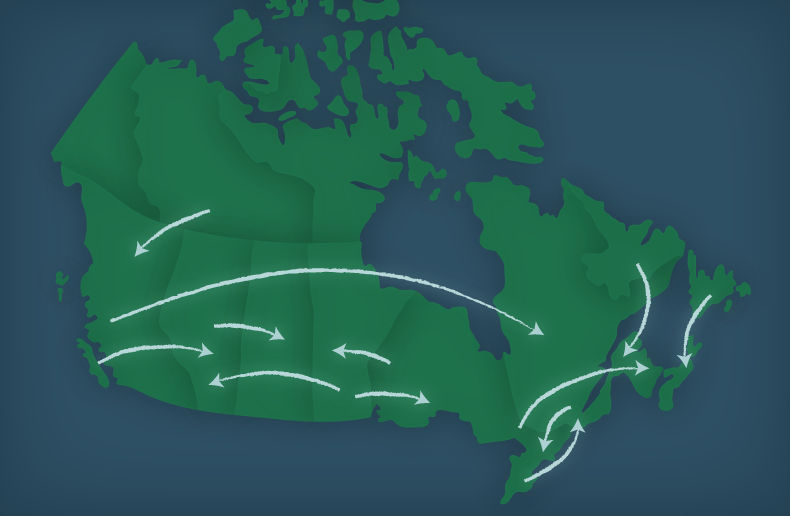Employers Reinsurance Corporation (ERC) gave the directors and officers liability sector the royal brush-off by limiting its writing to smaller risks, and revamping its entire global strategy in the process.
In the late ‘90s, American reinsurer ERC, a subsidiary of the conglomerate General Electric (GE), had a lucrative portfolio of over US$100 million in the directors and officers liability insurance sector (D&O). But the reinsurer quickly realized that it had painted itself in a corner: the stock market bloodbath triggered by dot coms, telecoms and Wall Street scandals turned D&O insurance into a lethal battlefield. What’s more, ERC’s D&O portfolio was mainly American.
“That was our weakness,” confided Marc Poliquin, vice-president and D&O product manager at ERC. “We had been doing minimal selection as to size or capitalization of public corporations insured by our cedants (insurers). That is why we decided to diversify our portfolio considerably, by massively cutting coverage of companies listed on U.S. stock markets. We clearly favoured sub-segments of private corporations and non-profit organizations (NPO).”
A daring move to be sure, ERC’s shift hurt its D&O portfolio. As executives are quick to admit, demand still largely originates from listed companies, including the largest firms. Consequently, ERC’s global D&O portfolio shrunk radically, to far below US$100 million.
ERC is now putting its fate in the hands of private companies, small and mid-sized businesses and small cap companies. The reinsurer is steering clear of large American public companies, whose risk has aggravated in the aftermath of recent financial scandals, explained Mr. Poliquin. In unprecedented geographical diversification, ERC is gearing up to conquer the global D&O market. Canada is squarely in its sights.
A long shot
Is banking on insurance (and reinsurance) of NPOs a long shot? “Certainly. But the market is enormous and is growing day by day. Take, for example, the medical services segment in the United States. There is a veritable industry of hospitals and retirement homes out there. These NPOs are often poorly financed. There is resulting pressure to hire underpaid, poorly trained staff, which often leads to professional errors. In fact, the main risk comes from bodily harm inflicted on a third person. Cumulative losses in this sector come from administrators that have not adopted a systematic policy of background checks during recruitment.”
If you think the risk is limited to the U.S., think again. Mr. Poliquin cited the case of the famous leaky condos in British Columbia (especially in the Vancouver region). Hundreds of buildings and dwellings were devastated by damage caused by water infiltration and humidity.
This case was a double whammy: on top of professional liability for contractors, who are covered in case of construction defects, there were many claims for injuries to a third party, a lesser known category that could be very detrimental to insurers’ balance sheets. Many people got sick because of exposure to mould caused by the moisture. They then sued the union…together with the volunteer administrators of the condo building.
This is one risk that reinsurers had previously overlooked. Today, they negotiate with their cedants for exclusions or limits related to this risk. Another promising market for ERC.
Times have changed!
Mr. Poliquin believes that private Canadian companies should think twice before scoffing at D&O coverage. Times have changed, he says.
Small companies listed on the American stock market (capitalization of less than US$1 billion), are also very attractive for ERC because this sub-segment has lower risks coupled with higher returns. “With large cap companies, we concluded that even selective underwriting does not suffice to prevent losses.”
Often, small public corporations do not procure sufficient D&O coverage to face the new hazards of the global economy: regulatory changes in stock markets, campaigns by shareholders’ rights activists, and new laws related to financial scandals, among others, he noted.
A complicated reorientation
ERC’s massive shift toward private companies was propelled by firms’ demand for insurance that covers several areas simultaneously.
“Global reinsurers treaties that are strictly concentrated in D&O are quite rare,” Mr. Poliquin explained. “In general they include several sub-segments such as errors and omissions insurance (E&O) or employment practices. In the United States, this category of coverage generally protects companies from lawsuits for discrimination, sexual harassment, employment equity, poorly managed promotions or contested employee management policies.”
Embarking on the merger and acquisition trend, the reinsurer bought out a few of its competitors, including Frankona Re and Kemper Re. Frankona’s consolidated portfolios were difficult to allocate because of computer system disparities. In particular, the way they recorded risks varied greatly. Recognizing these risks quickly assumed jigsaw puzzle proportions. “In the end, we managed to launch a standardized global platform. To do so, we formed teams of managers to improve the accuracy of our statistics. This let us better manage our losses and reserves.”
ERC’s new D&O strategy encountered other hurdles as well. When the reinsurer negotiated treaties with its main brokers, firms such as Marsh or AON had amalgamated risk portfolios. ERC then had to “place” all the risks that their cedants conferred. Steadfastly against insuring large cap risk listed on the U.S. stock market, the reinsurer had no choice but to soften its stance.
Mr. Poliquin revealed that the safest strategy under the circumstances is industry diversification: no more than five or ten per cent of premiums in the energy sector, for example.
Although it pared down its U.S. large company portfolio, ERC’s largest D&O market today is still the United States, followed by the United Kingdom (including Ireland), the European Union (excluding the United Kingdom) and Australia. Canada and Australia are among the least covered markets by ERC in D&O.






